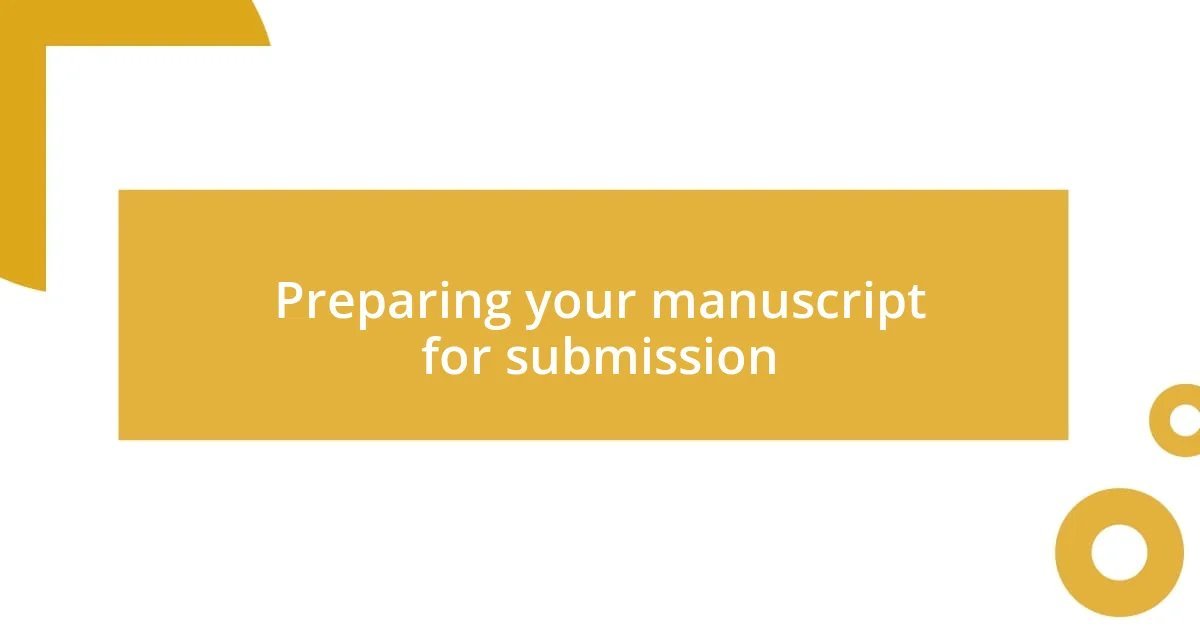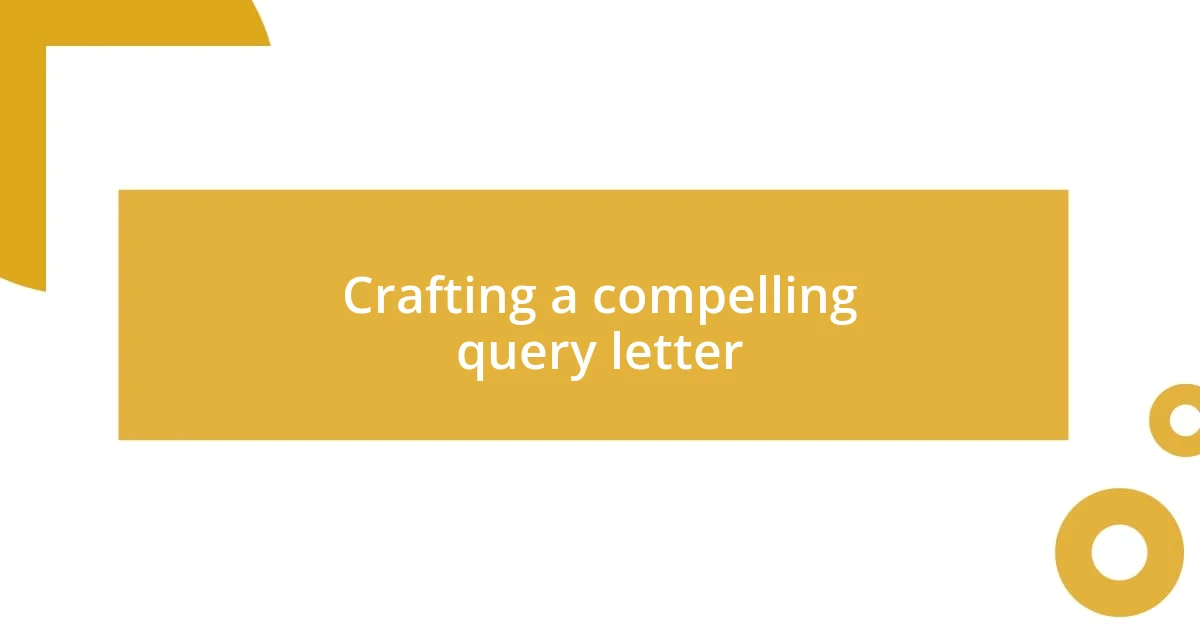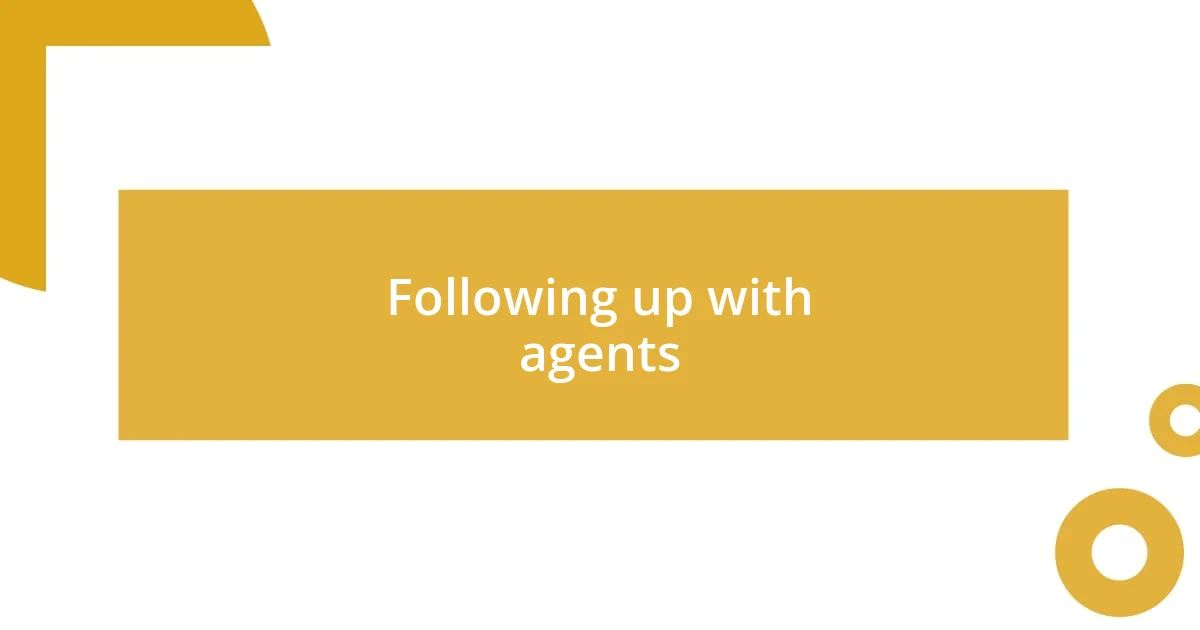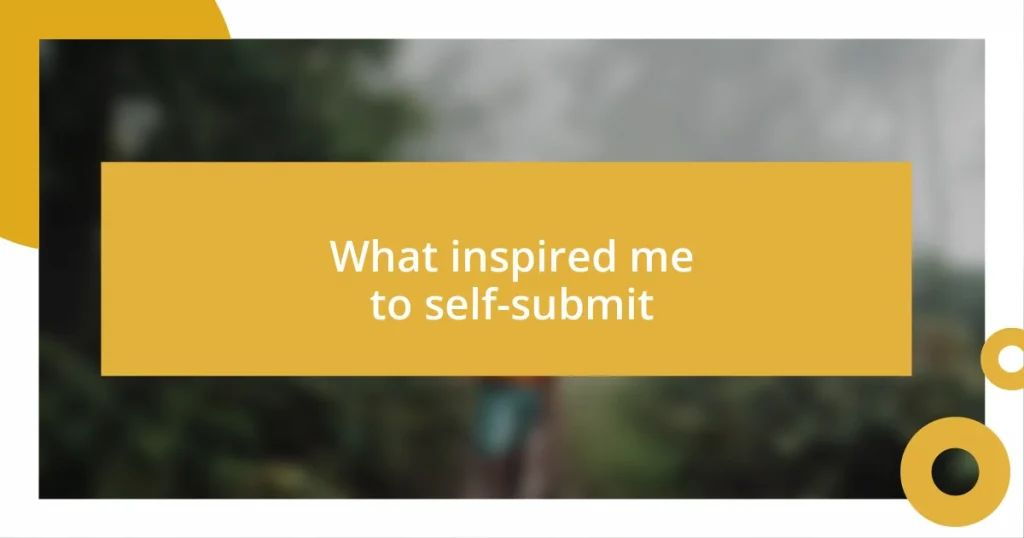Key takeaways:
- Understanding the literary agent’s process is crucial for authors, as each agent has unique methods for handling queries and submissions.
- Preparing a polished manuscript and crafting a compelling query letter are essential steps that demonstrate professionalism and dedication.
- Tracking submissions and learning from rejections are vital for growth, helping authors refine their work and stay motivated through the journey.

Understanding literary agents process
Understanding the literary agent’s process can be a game-changer for any aspiring author. I remember the first time I submitted my manuscript; I thought it was just a matter of sending an email and waiting for a response. However, I quickly learned that each agent has their own unique method of handling queries, often filtering through hundreds of submissions to find the right fit for their roster. How do they even manage that?
It’s fascinating to think about the layers involved—a literary agent isn’t just a middle-person; they’re also our advocates in a competitive industry. Their process usually starts with evaluating the query letter, which is your first impression. I vividly recall the mix of excitement and anxiety I felt writing mine, hoping it would resonate with someone. Did I capture what my story was really about?
Once an agent shows interest, they request the full manuscript. This moment can feel like a massive leap of faith. It’s as if you’re standing on the edge of a diving board, unsure if you should jump. I had thoughts racing through my mind, like, “What if they hate it?” or “What if they love it?” Knowing that agents sift through submissions carefully helps me understand the pressure they’re under, and why clarity and professionalism in our communication is vital.

Preparing your manuscript for submission
Preparing your manuscript for submission is crucial for making a strong impression on literary agents. I remember meticulously fine-tuning my manuscript, obsessively checking every detail—grammar, punctuation, and formatting. It felt like giving my baby to someone else, and I wanted it to look polished and professional. It’s important to understand that a clean, professional manuscript speaks volumes about your dedication and seriousness as a writer.
To help you in your preparation, here’s a quick checklist of essentials:
- Formatting: Use standard formatting (double-spaced, 12-point Times New Roman font, 1-inch margins).
- Proofreading: Have multiple pairs of eyes review your manuscript for typos and grammatical errors.
- Synopsis: Prepare a concise and captivating synopsis that encapsulates your plot and characters.
- Query Letter: Craft a compelling query letter tailored to each agent’s specific requirements.
- Sample Pages: Include the first 10 to 50 pages, as specified by the agent, ensuring they are the best representation of your writing.
I found that preparing this way not only strengthened my submission but also built my confidence, allowing me to focus on the next steps in my writing journey. Each element plays a role in conveying your story’s value and your professionalism as a writer.

Crafting a compelling query letter
Crafting a compelling query letter is an essential step in your journey to securing a literary agent. I can still feel the late nights spent wrestling with the right words and format for my query. It was more than just a summary of my book; it was my chance to showcase my voice and style. I learned that a query letter is your first handshake with an agent—firm, confident, and engaging. What details do you think make it stand out?
Each element of the letter needs to shine, from a captivating opening line about your story to a brief author bio that shows your connections to the genre. I once began my query with a metaphor that related to my book’s theme, and it sparked a connection right away. It made me realize how vital it is to balance professionalism with a personal touch, creating a memorable impression.
To ease the overwhelming process, I found it helpful to break down the query letter into sections and tackle them one at a time. Focusing on different components made it less daunting. This approach let me infuse each part with care and authenticity. Below is a comparison table that outlines key elements of a query letter to help you get started:
| Element | Purpose |
|---|---|
| Hook | Grabs the agent’s attention and entices them to read more. |
| Synopsis | Summarizes your story in a few impactful sentences. |
| Author Bio | Highlights relevant experience or credentials that lend credibility. |

Researching suitable literary agents
Researching suitable literary agents is a fundamental step that can significantly affect your publishing journey. I remember diving deep into websites like QueryTracker and Manuscript Wishlist, where I experienced the thrill of matching my genre with agents actively seeking new work. It’s like dating; you want to find someone who gets you and your story.
While investigating, I discovered the importance of reading agents’ biographies. What struck me was how much insight I gained into their preferences and past projects. I once found an agent who had a soft spot for quirky literary fiction, which happened to align perfectly with my manuscript. It felt rewarding to uncover these connections, as if I was piecing together a puzzle that could lead to my success.
Additionally, taking notes on my findings went a long way in keeping everything organized. I maintained a simple spreadsheet with names, genres, and any personal quirks agents mentioned in interviews. This helped me personalize each query letter. It felt much more genuine to refer to specific works they represented when reaching out. What seemed like tedious research actually turned into an adventure, enhancing my understanding of the literary landscape.

Tracking your submissions effectively
Keeping track of your submissions can feel like trying to juggle too many balls at once, but I’ve learned that an organized approach makes a world of difference. I developed a tracker that included submission dates, the agents I approached, and their responses. Every time I received feedback, whether it was a rejection or a request for more material, I felt a sense of progress. It reminded me that each step, no matter how small, was part of my journey. Do you keep a list of your submissions?
Another effective strategy I used was color-coding my spreadsheet. For example, blue highlighted successful queries, while red marked rejections. This visual element helped me maintain my motivation during the tough phases. On difficult days, seeing the “wins” light up like a beacon was a comforting reminder that persistence pays off. Have you considered ways to visually track your progress?
I also found it beneficial to document any specific feedback from agents so I could refine my work further. Recording these insights helped me assess patterns in my submissions and adapt my approach. Eventually, I realized that tracking wasn’t just about keeping numbers; it was about reflecting on my growth as a writer. What insights could your own submissions reveal about your writing journey?

Following up with agents
Following up with literary agents can feel daunting, but I found it to be an essential part of the process. After my initial submissions, I marked a reminder on my calendar to check in. I remember sending a friendly email a few weeks later, gently asking if there had been any updates. That little nudge felt empowering, like I was taking control of my journey instead of waiting in limbo.
I was surprised by the responses I received. Some agents appreciated the follow-up, while others were clear about their timelines. I once had an agent respond with a personalized note explaining their lengthy reviewing process, which put my mind at ease. It made me wonder: how often do we forget that agents are people too, navigating their own busy schedules?
When I didn’t hear back after several follow-ups, I learned the importance of knowing when to move on. It’s tough to let go of a potential opportunity, but I realized there are many agents out there. I took the chance to revisit my manuscripts, polish them up, and strategize my next moves. Have you faced similar moments of indecision, and how did you push forward?

Learning from rejections and feedback
I remember the sting of my first rejection. It felt personal, like a critique of my very soul. But as I read through the agent’s feedback, a strange thing happened—I began to see it as an opportunity. Each rejection was a way for me to refine my voice, sharpen my story, and ultimately grow. Have you ever noticed how rejection can sometimes shine a light on areas we might overlook?
Feedback, whether favorable or not, has a way of guiding our creative process. I once received a thoughtful email from an agent who enjoyed my writing but felt the pacing needed work. Instead of dismissing it, I chose to delve deeper into my manuscript, analyzing each chapter with fresh eyes. This shift in perspective helped me transform what felt like a setback into a constructive step forward. Have you ever taken feedback and turned it into a powerful lesson in your writing journey?
It’s easy to feel discouraged after a few rejections, but I learned that resilience is key. I started to embrace a growth mindset. After receiving a particularly blunt rejection, I sat down and revised a chapter, ordering feedback from a writing group. They pointed out some blind spots I hadn’t seen in my own work. That experience taught me that rejection is not the end but rather a fork in the road; it’s an invitation to keep evolving. How do you choose to respond when faced with criticism?















